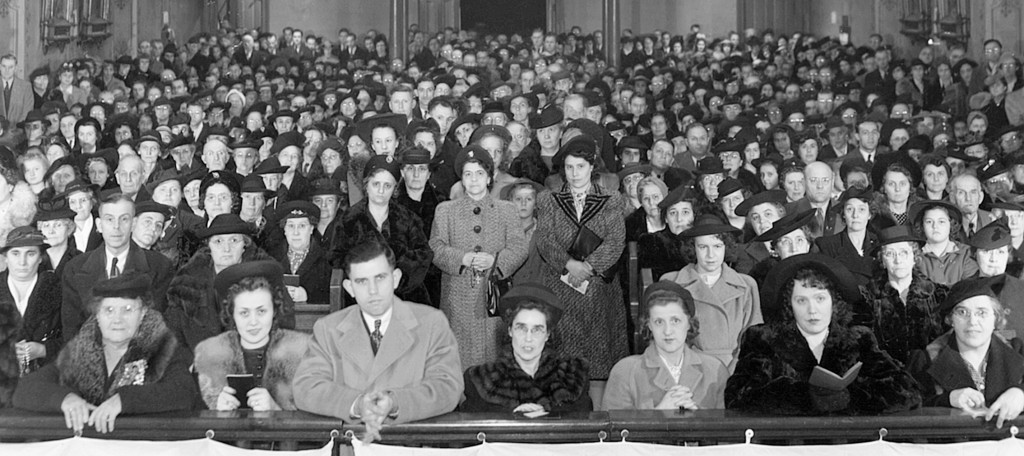Last time: The Catholic Research Forum method of estimating the Catholic population was described. This method makes use of the percentage of babies that are baptized, and the percentage of people that die and receive Catholic funerals. In this article the Catholic population derived from this methodology is compared to the results from The Official Catholic Directory and telephone polls.
The Official Catholic Directory
Two other methods of estimating the Catholic population are commonly used in the United States: the Official Catholic Directory and telephone surveys of religious affiliation. The Official Catholic Directory, commonly known as the Kenedy Directory, is published annually. Research discovered that many dioceses provide summary data to this directory based upon registration data from parish reports.
There are serious problems of validity and reliability with using registration. One validity issue has already been discussed: how valid is it for a parish to demand registration in order to be counted a Catholic when the Church’s internal governing document has no such requirement? Even discounting this question, another validity issue is present: the pastor’s philosophy toward registration. Some pastors demand visible commitment and will not register Catholics in the parish who are not fairly frequent in their Mass attendance, do not contribute financially to the parish or are creating “public scandal,” such as people living together before marriage. Other pastors take a more pastoral approach and register any Catholic who wishes to be a member of the parish.
Aside from the validity questions, there are also three issues of reliability: 1) the financial implications of an accurate count of registered Catholics; 2) frequency of updating registrations; and 3) translating households into individuals. In some dioceses some parish financial assessments are based upon the number of registered Catholics. Obviously this can create strong disincentives to accurate reporting of the number of registered parishioners.
A second question of reliability revolves around the frequency of updating parish records. If registered parishioners move out of the area most parishes will catch this very quickly if they use monthly contribution envelopes that are mailed to parishioners. When parishioners move the envelopes are returned by the post office to the parish with their new addresses. If parishioners “drop out” of active parish life, especially if done on a gradual basis, there may be no indication to the parish that they wish to be considered inactive. The parish may carry them on registration rolls for years.
The third question of reliability revolves around translating Catholic families into Catholic individuals. The US Catholic Church has a tradition of registering and counting families instead of individuals. When parishes that only count families are asked to provide the Official Catholic Directory with the number of Catholics, they will arrive at a number. But it is anyone’s guess how they do this. Some may use a constant based upon U.S. Census figures – say 2.75 people per household – and simply multiply their registered households by this figure. This will result in most Hispanic parishes severely underestimating their population while older ethnic parishes are overestimating theirs. Note that this particular issue of reliability does not apply to parishes that run parish census software and maintain accurate records.
Telephone Surveys of Religious Affiliation
Telephone surveys about religion also provide an estimate of the Catholic population. The strengths of these surveys are fairly obvious: 1) they are usually national in scope; 2) there is a longitudinal aspect to some, such as the General Social Surveys; 3) there is scientific rigor in the drawing of a national probability sample; and 4) they are inexpensive for diocesan researchers in terms of finances and time.
Unfortunately the data collected has all the weaknesses of any type of self-reporting. A person reporting to be Catholic may be an active Catholic, an inactive Catholic or not a Catholic. The obvious questions of social desirability and fleeting interest need to be considered. A paper by Hadaway, Marler and Chavez (1993) found that people often over-reported their attendance at church. This raises the question: To what extent do people also over-report their religious affiliation?
A Comparison of the Three Methods of Estimating Catholics
To compare the three methods, each was used to estimate the Catholic population for both the Rockford Diocese and for the United States for 1990. To make comparisons easier across entities which are so different in size, the Catholic population is presented as percentages of the total population.
Comparison of the 1990 Catholic Population in
the Diocese of Rockford, Illinois and the United States
According to Three Methodologies
| Methodology |
Rockford |
U.S. |
| Official Catholic Directory |
20.8% |
21.6% |
| Catholic Research Forum |
23.6% |
22.8% |
| Telephone Survey (Kosmin) |
28.8% |
26.3% |
The same ordinal relationship exists with the Rockford and the U.S. data: the OCD methodology results in the lowest percentage of Catholics and the telephone survey results in the highest percentage. And in both Rockford and the nation the Research Forum’s methodology results in a percentage that is closer to the OCD results than telephone survey results. This stands to reason. It is easier to say one is a Catholic to an anonymous surveyor than to take the steps that are necessary to show that one is Catholic.
The Catholic Research Forum method of estimating the Catholic population has been used by many dioceses for more than 20 years. While not without weaknesses, it should be the preferred method of estimating the Catholic population.
References:
Hadaway, Kirk, Penny Marler and Mark Chavez. 1993. “What the Polls Don’t Show: A Closer Look at U.S. Church Attendance.” American Sociological Review
Kosmin, Barry A. and Seymour P. Lachman. 1993. One Nation Under God: Religion in Contemporary American Society. New York: Harmony Books.

Thank you Michael for this excellent summary. I will keep it handy when discussing counting issues each year with higher ups.